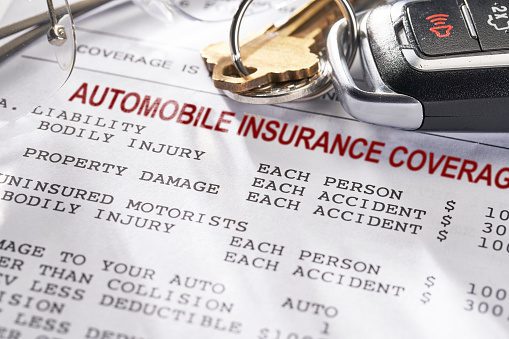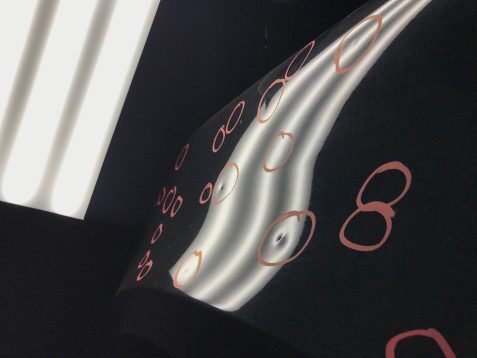Top 5 Pre-Filing Hail Claims Facts
Auto hail damage always presents a dilemma for car owners. Many decide to live with the dings whereas others file comprehensive insurance claims as soon as they see the hail fall. Some insurance companies state deadlines when auto hail damage insurance claims can be reported and when repairs must be completed.
In this blog, we cover all the questions that involve auto hail damage and repair claims.

Review your insurance policy today to verify adequate coverage.
1. UNDERSTAND YOUR VEHICLES’S INSURANCE COVERAGE
There is only one level of coverage that will cover the cost to repair auto hail damage and any other vehicle damage caused by Mother Nature. It is called Comprehensive Insurance. It is common that most people assume that a Collision Policy would cover hail damage. Automobile insurance policies are (or should be) customized upon the area you live in and where you drive most frequently.
If you live in the states of Texas and Colorado or any of the other states that fall within Tornado Ally (Mid-United States), you should have Comprehensive Coverage because of the frequent hailstorms. These types of storms occur every year in various parts of the United States. We can use Denver, Colorado for example. The residents here experience drastic changes in temperature, excessive rain, hail, and snow, you should also have Collision Coverage. Where Comprehensive covers the cost of auto hail damage repair and storm damage, it does not cover damage caused by falling debris, loose gravel, and potholes that come because of drastic weather variations.
Please check your policy today. Your coverage details can be found on your paper copy, online, or you can call the general toll-free number found on your insurance carrier’s website.
Auto Insurance Coverage’s Explained
What auto insurance coverage is required by law?
If you own a car, you will need car insurance that meets the minimum legal requirements for auto insurance based on the law in your state. Each state is different, which is why it is important to confirm requirements where you live. You can also contact your insurance representative if you have questions. These minimum requirements for each state can be found at the state insurance commissioner’s website.
Driving without insurance is illegal in almost every state. Make sure you and your policy holders have met the minimum insurance requirements in your state before driving.
There are 4 basic types of coverage that may be included in state minimum car insurance requirements:
- Bodily injury liability (defined per person as well as per accident)
- Property damage liability (per accident)
- Personal injury protection (per person and per accident)
- Uninsured or underinsured motorist protection (per person and per accident)
Car insurance liability coverages may be expressed as a series of numbers, which represent bodily injury coverage per person, bodily injury coverage per accident, and total property damage coverage. For example, car insurance coverage could be notated as $30,000/$60,000/$25,000, or 30/60/25. Such coverage would provide:
- $30,000 per person for bodily injury
- $60,000 per accident for bodily injury
- $25,000 per accident for property damage
This is what is required of you to carry by law. This, theoretically, protects the OTHER party in an accident. Not you, or your car.
— The U/W coverage is uninsured/underinsured. Customarily, if you give 100/300/100 liability to someone else, you get that back for yourself in U/W coverage. So, if someone without insurance hits you, you will get $100K from your insurance company for your medical bills. If you are carrying bad coverage, that extends to you too. So, if you get hit by an uninsured motorist, and you have $80,000 in medical bills, you better not have 20/40/15 coverage.
— The C5000 is medical payments. This covers you and people inside your car in the event of an accident involving the car. In this case, the max payout is $5,000. Essentially, this is to cover any additional cost you have, such as your health insurance deductible. We want you to be whole, so if you have a $3,500 deductible, that will pay from this, and then your health insurance covers the rest. If you are at an at fault accident, this is all the medical payments coverage you have (you can buy higher or lower limits of course). I sure hope you have health insurance.
— The D100 is Comprehensive Coverage. In this case, with a $100 deductible. Comp covers YOUR vehicle in the event of an accident that was not your fault, but not necessarily someone else’s fault. That would be you hitting a deer, a rock cracks your windshield, your car is stolen or vandalized, etc.
— The G500 is Collision Coverage. This covers YOUR vehicle in the event of an AT FAULT accident. Ordinarily, to make a full coverage policy, you would have Liability + U/W + Comp + Collision. In this case, a $500 deductible. You pay the first $500, the insurance company pays the rest to fix your car. You have no deductible to pay towards fixing the other car that you hit, your insurance just pays them, up to the limits, to make them whole. As a VIVID Auto Body Shop representative about our Deductible Assistance program.
— H in a State Farm policy also reads ERS. This is Emergency Roadside Service. With State Farm covers a tow, jumpstart, tire change, a mechanics labor for 1 hr. AT the point of breakdown, someone to bring fuel to you, etc.
— R1 is car rental. Car rental will have some limits to it, like 25/600. This means the insurance company will pay for you to rent a car, under your claim/policy, if your car was in an accident and being repaired. In this case $25/day up to $600 total, which is about 3 weeks. You can discuss with your insurance agent on how to customize your rental coverage policy.

2. DON’T ASSUME THAT YOU DON’T HAVE ENOUGH HAIL DAMAGE TO JUSTIFY FILING A CLAIM.
Many decide to live with hail dings because they assume the damage is not enough to justify the deductible.
Other’s might find that seemingly minimal damage is enough to cause their insurers to total out their cars. If you can see dents after a hailstorm, you should always assume that there are more. You might not be able to see them but not all hail dents can be visualized with the naked eye. You can see more dents if you pull your vehicle inside the garage or covered parking area and use a fluorescent or LED light.
A Paintless Dent Repair shop like VIVID Auto Body Shop specialize in the finding and repairing of ALL auto hail damage. We use specially designed light boards that have strips of various color LED lighting that help our technicians literally see EVERY imperfection, no matter how tiny or shallow. Whereas you might only see a few hood dents, your insurance adjuster might find a few more. Upon the 3rd inspection by a reputable Paintless Dent Repair shop, you might discover that what you assumed what just a couple of hundred dollars of damage turns into a few thousand.
3. PRE-INSPECTIONS FROM PDR SHOPS ARE AN OPTION.
You can always get a free inspection from a paintless dent repair shop before you file a claim with your insurance company.
If you do not own your vehicle and carry comprehensive insurance because your lender requires you to do so, you might be concerned about not having enough damage to justify paying a high deductible. You always have the option to call VIVID Auto Body Shop to schedule a free hail damage inspection.
4. REPAIR THE DAMAGE OR KEEP THE MONEY.
Do I have to get my hail damage fixed or can I just keep the insurance check?
If you are contemplating keeping the insurance company check to pay off some bills instead of getting your car repaired, consider the following.
- Are you making monthly payments to a lender? If you are then you have a contractual obligation to get the hail damage repaired.
- Do you own the vehicle? If yes, the money is yours to do with as you choose. Keep in mind that if your vehicle is damaged again, you will not be paid a second time for pre-existing damage. You also run the risk of being dropped by your insurance company.
- What are your future plans for the vehicle? If your plan is to drive the vehicle until it drives no more, it is your decision as to what you can live with. If selling your car in the future is the plan, remember that the value of your vehicle greatly decreases if it has hail damage.
- Is the Preliminary Insurance check (1st check) enough? The first insurance check is always 25%-30% of what it really cost to repair the vehicle. For example, if your vehicle has $4,000 of hail damage on the vehicle, the insurance company may cut you a check for only $1,000. The best recommendation is not to settle and accept the first check but instead, take it to a trained and professional hail damage repair facility like VIVID Auto Body Shop.
5. DROPPING OFF MY CAR FOR REPAIRS BUT NEED A RENTAL / LOANER CAR.
You might assume that your insurance policy covers a rental car, until you find out that it does not.
This is something you should also look in to before filing your claim. VIVID Auto Body Shop offers free rental car service for our hail damage repair customers that do not have rental car coverage. Most car hail repairs require approximately 1-3 days of shop time.
VIVID Auto Body Shop is one place that would not let you down. We provide both types of hail repair (Paintless Dent Repair and Traditional Body Repair) and will be happy to answer any questions that you may have. Feel free to call us any time at (972)737-3288
You can also use our Online Estimator Tool to quickly and easily upload pictures of your vehicle damage. Our team of highly trained Damage Analysis Experts will review your request and get right back to you.
Thank you very much for stopping by and visiting us today!
